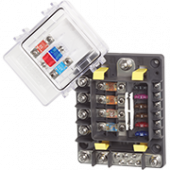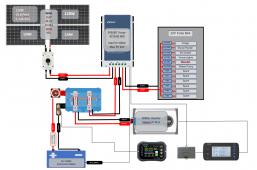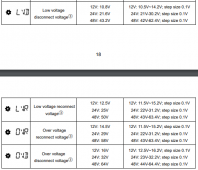ianganderton
Auckland, NZ
Good morning 
I’m trying to minimise connections in the system I’m installing and have found this
 www.bluesea.com
www.bluesea.com

I have a 12v 2000W epever inverter

 www.epever.com
www.epever.com
In the inverter manual it specifies 2 x 125A breakers
Manual - https://www.epever.com/wp-content/uploads/2021/05/IPower-Plus-Manual-EN-V3.1.pdf#page23
The fuse/distribution box takes midi fuses which max out at 200A. Could I parallel 2 x 125A midi fuses with equal length 10 or 16mm2 cables (pretty short, 30cm) going to the inverter?
This solution will radically reduce the number of connections I will need to build which to my mind will radically reduce the number of potential failure/resistance points. Plus the circuits will be dramatically more compact further reducing resistance
I’m trying to minimise connections in the system I’m installing and have found this
SafetyHub 150 Fuse Block - Blue Sea Systems
Ignition-protected fuse blocks capable of consolidating and protecting multiple 1A to 200A circuits.

I have a 12v 2000W epever inverter

IPower-Plus Series(220/230VAC) 500~5000W Pure Sine Wave Inverter
IP-Plus is a high-frequency pure sine wave inverter that can convert 12/24/48VDC to 220/230VAC and power the AC loads. Ranging from 500~5000W
 www.epever.com
www.epever.com
In the inverter manual it specifies 2 x 125A breakers
Manual - https://www.epever.com/wp-content/uploads/2021/05/IPower-Plus-Manual-EN-V3.1.pdf#page23
The fuse/distribution box takes midi fuses which max out at 200A. Could I parallel 2 x 125A midi fuses with equal length 10 or 16mm2 cables (pretty short, 30cm) going to the inverter?
This solution will radically reduce the number of connections I will need to build which to my mind will radically reduce the number of potential failure/resistance points. Plus the circuits will be dramatically more compact further reducing resistance
Last edited:








